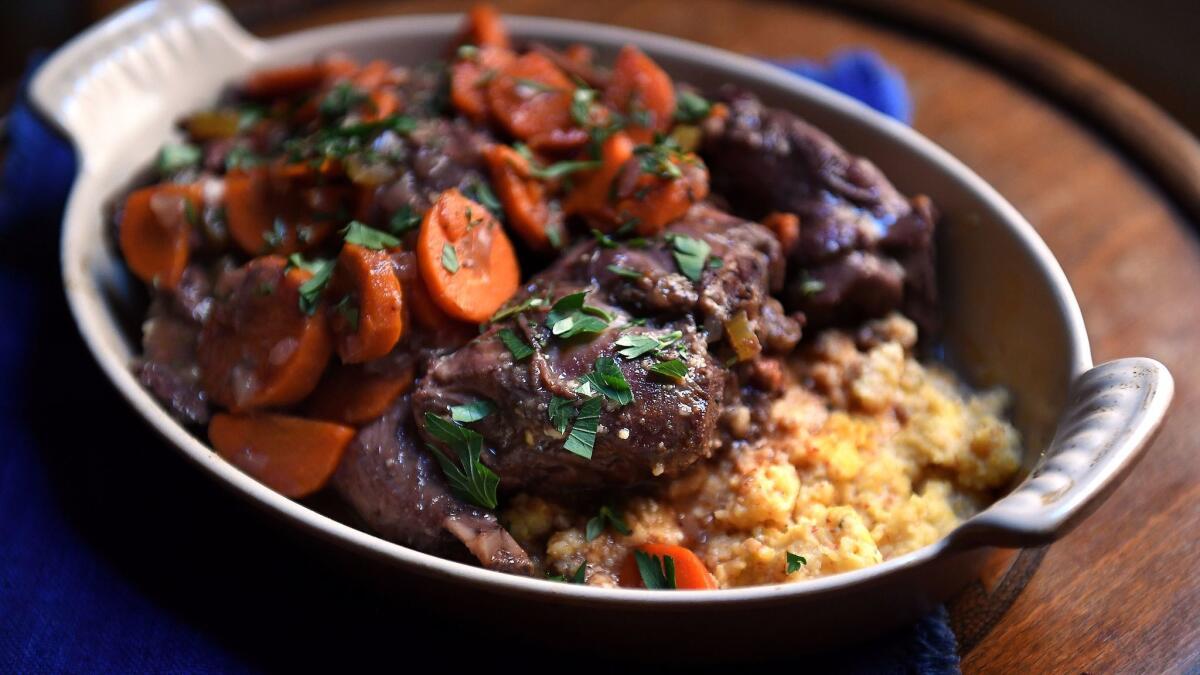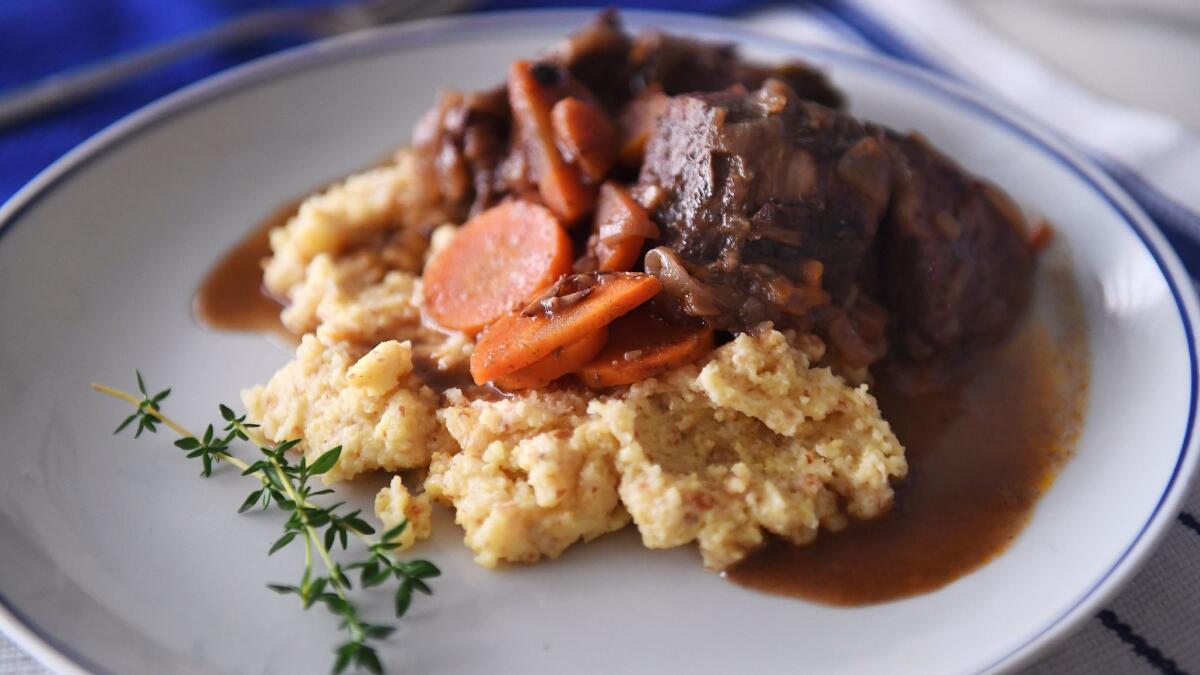Daube, the classic Provençal stew, is old-school comfort food

There are many comforting stews in this world, but my favorite, the one I go back to over and over again, is the Provençal wine and meat stew called daube. Daube (pronounced “dobe”), is earthier and more robust than its refined northern cousin, boeuf bourguignon. It is also more vegetal, with lots of garlic, onions and carrots, and has a background whisper of orange, from the strip of zest that is simmered along with the meat.
Making a daube takes some planning ahead, as it should be a three-day affair — one day for marinating, one for cooking, one for resting. (If you’re making rabbit daube, you may need an extra day for ordering the rabbit, as most butchers in Los Angeles only carry frozen rabbit and they will need a day or two’s notice in order to thaw it and cut it up.) After a night in the refrigerator, on the third day, you can skim the fat off the top to lighten the dish, then bring it back to a simmer and cook very gently for anywhere from 30 minutes to an hour. Once it’s done it keeps for another four or five days, which makes it a great dish to have on hand during the holidays. My hungry college freshman was very happy about its presence in my refrigerator over the Thanksgiving break.
The classic Provençal stew was typically made with tough cuts of beef or with bull meat. It was traditionally cooked in a rounded, earthenware cooking vessel with an indented lid called a daubière. The curved shape of the vessel, and the cavity in the lid that is filled with water or wine, prevent evaporation and cause condensation, so that the meat remains moist throughout its long simmer, traditionally four to five hours (reduced to three to four in my recipe). I have a daubière, but when I made these daubes I didn’t use it; I used a regular heavy Le Creuset casserole and it worked just fine. The beef here is not nearly as tough as the lean Provençal meat. I use a mix of lean and not-so-lean cuts, usually half bottom round and half chuck, so the traditional pot is not really necessary to ensure that the meat remain moist. After three to four hours of very slow simmering, you’ll have an incredibly fragrant stew with fork-tender beef.
Beef isn’t the only meat that can be at the heart of a daube. Anything from rabbit to lamb to octopus can be slowly braised in wine with aromatics and transformed into this comforting dish. The method remains the same with other proteins, but the cooking time will vary. After marinating for 12 to 24 hours in red wine with onions, carrots, garlic and a bouquet garni, the meat is removed from the wine, patted dry, and browned in olive oil. The onions and carrots are lightly browned, then the meat and vegetables, with aromatics, are simmered in the same wine they slept in overnight. The stew could be served as soon as the meat is fork-tender or falling off the bone, but the flavors will benefit from an overnight rest. It’s much easier, too, to spoon off the excess fat if it has chilled at the top.
Traditional daube recipes usually call for pancetta or salt pork, which adds flavor and body to the stew. I have made my beef daube with and without the pancetta, and prefer the latter; I like the pure flavors of the wine, beef and vegetables. But when I make a rabbit daube, I do include pancetta. The pork flavor and richness is welcome with this lean meat.

My favorite accompaniment for daube is polenta, with or without Parmesan stirred into it at the end of cooking. Spoon polenta onto plates or wide bowls, make a well in the center, and top it with stew. Close seconds to polenta, in no particular order, are pasta, farro, mashed potatoes and rice.
As for leftovers, there is no better accompaniment to pasta. Just pull the rabbit off the bone and shred it, or pull apart large pieces of beef, mix the meat well with the gravy, reheat and toss with pasta. Or make what the French call a macaronade, a sort of macaroni and cheese in which the béchamel is replaced by daube. Toss the daube leftovers with pasta, then add a mix of Gruyère and Parmesan; then scrape the mixture into an oiled baking dish, sprinkle the top with breadcrumbs tossed with olive oil, and bake at 400 degrees until the top is browned. It’s a brilliant way to get two different meals out of one timeless stew.
Martha Rose Shulman is a cookbook author and food writer based in Los Angeles.
More to Read
Eat your way across L.A.
Get our weekly Tasting Notes newsletter for reviews, news and more.
You may occasionally receive promotional content from the Los Angeles Times.






